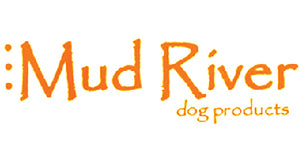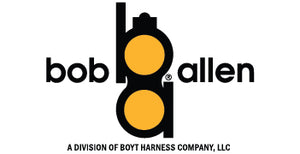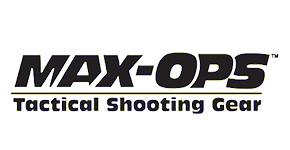Blunt Force Trauma: 8 First Aid Tips
Accidents happen. Appropriate first aid measures and sufficient training regarding these situations can be life saving. The first hour following a critical injury is the termed the ‘golden hour' during which time medical interventions can greatly impact outcome. EMT's are not routinely available to support and triage pet transport during the golden hour, but every pet owner can make a difference toward survival of a pet following traumatic injury with learning a few simple tips.
Damage Control
Immediately after a traumatic event, an injured pet should be carefully moved to an area that is quiet and low risk for repeat injury.* Place a muzzle or a thick towel over the pets mouth to prevent an injured pet from biting you or others (do not however muzzle a pet that is having breathing difficulty). A normally calm pet can become quite dangerous due to fear, pain, or brain injury. If they harm another person then they might go to a Los Angeles Dog Bite Lawyer to seek compensation for their injuries. A muzzle can be made from a leash or piece of fabric. This step will enable you to safely administer first aid without risk of injury to yourself or your pet. *Read below: Practice Restraint, with regard to moving your pet.
Remember the ABC's
Airway, Breathing, and Circulation. Unconscious or stunned pets may need assistance with breathing and blood flow. Please learn pet-specific CPCR (Cardiopulmonary Cerebral Resuscitation) basics - these are vital to support life and take priority over wound care and broken or dislocated bones (which can be treated at a later time). Ideally, an assistant is able to help perform CPCR. Unconscious or confused pets with suspected brain trauma should have their head kept slightly elevated during transport if possible to keep pressure levels down within the skull.
Keep Calm and Call a Veterinarian
Call your veterinary clinic for help with first aid over the phone and to arrange emergency care. After hours and weekend injuries may require a trip to a referral emergency clinic. Calling ahead is necessary to ensure emergency support is available and prepared when you arrive with your pet.
Practice Restraint
Best practice is to keep pets who have experienced polytrauma (like hit by a car, fall from heights, impalements, gunshot wounds, etc) as immobile as possible. Spinal injuries and internal organ damage may be exacerbated by manipulation of the pet. Try to minimize unnecessary movements by sliding an immobile pet onto a thick blanket or plywood for transport. This will limit further trauma and pain and allow transfer to an emergency care facility. Pets that are irritable should be placed in a kennel to prevent unnecessary movement about the vehicle during transport. Placing an e-collar (those fun head cones the vet sends home after surgery!) can help prevent a pet from furthering self injury through chewing or licking himself.
Hemorrhage
Blood loss severity will vary based on location of injury. Often internal hemorrhaging and injury is more severe than external losses. For this reason, all trauma patients should go in for emergency assessment and care. External bleeding from the legs can be minimized by applying a tourniquet above the injury. Pressure bandages using clean blankets, towels, or gauze can be applied at most locations to help hold lacerated skin edges together and support clotting and minimize blood loss. Pressure bandages must be held taught on the body to work. Try to clean your hands beforehand with some hand sanitizer if available, and never remove a pressure bandage if it becomes saturated with blood as this may dislodge a clot; it's better to add additional towels on top of saturated material.
Do NOT Remove an Impaled Object
If your pet becomes impaled on a stick or fence post, with an arrow or sharp object, or even a fishing lure or porcupine quills, DO NOT REMOVE: this can lead to further internal organ damage and uncontrollable hemorrhaging. If you end up doing this for someone else's pet and their pet sustains significant damages it could lead to a medical malpractice lawsuit. Instead, remove the object from its source rather than remove the pet from the object when possible (I.e. take the fence post with the dog still on it). Stabilize foreign objects using towels, blankets,or tape if feasible to prevent migration during transport.
Keep Warm
Comorbidities and subsequent death are often related to events following the injury and not to the initial trauma itself - one example is hypothermia. Hypothermia in trauma patients is common due to shifts in blood flow and blood loss. Keep your pet warm (not hot) with dry blankets, plastic tarp, and a heated cab during transport. Pets that maintain normal body temperature despite injury have a better chance of survival in most scenarios.
Supportive Care
Keep your pet calm. Once life threatening issues have been addressed, skin/tissue injuries and fractures/dislocations can be addressed. Protect damaged skin, exposed bone, or other organs with moist clean dressings. This will keep them fresh, possibly salvageable with surgery, and from further sources of infection. Splints can be made for damaged lower appendages using bubble wrap, newspaper, or layers of towels. This will help keep pet comfortable during transport. Remember, you are the first responder for your pet's injury. The steps you take are not in place of emergency care, nor should they take extended time. No more than 5-10 minutes should be used in your emergency triage, followed by direct transport to a veterinary care facility for further care.
Additional Information:
- American Red Cross has a downloadable phone app for pet first aid and an official pet CPCR and basic level first aid training course available online at RedCross.org
- Consider visiting catanddogfirstaid.com for more advanced training in pet first aid/triage.
- Many local community colleges or community ed programs may offer hands on training; check it out in your community!







